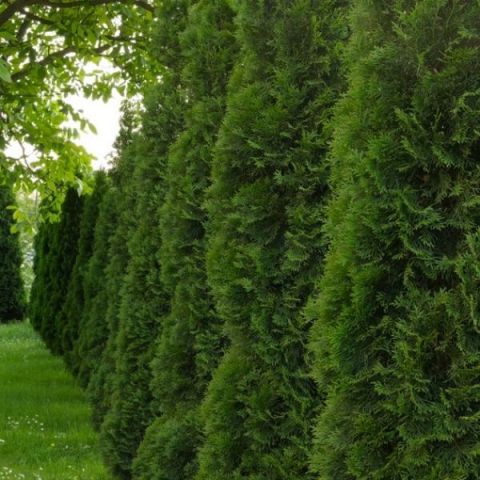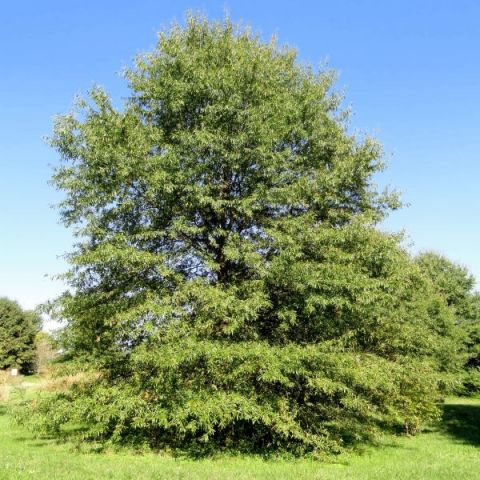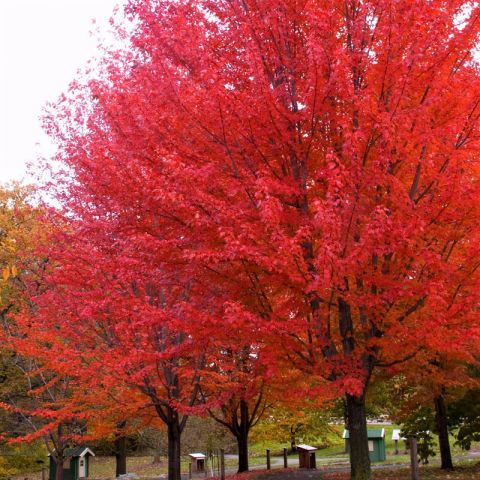A windbreak is a planting of one or more rows of trees, usually of a diverse set of species to provide shelter from the wind and prevent soil erosion. Below I will be talking about the trees, the benefits, and goals when choosing a windbreak on your property.
Why a windbreak?
Planting a windbreak on your property not only helps save money on yearly energy bills but with the right planning, a windbreak can be very astatically pleasing. Overtime windbreaks can improve the value of your home. A good windbreak can also provide habitat for wildlife and even food crops. By mixing in multiple species of trees, shrubs, and herbs into a mini-ecosystem windbreak can become a bit more resistant to diseases and other stressors.
Often, when thinking of windbreaks, the first pictures that come to mind are of perfectly manicured and trimmed hedges creating a sea of green. Something out of an old scene depicting large estates with hedges so straight, tall, and well-manicured where no one can see what’s on the other side.
When designing and choosing what species you are using for your wind block, you should make sure to do some investigation into the best trees for your zone and region. Try to avoid planting non-native trees that can become invasive when unmanaged.
If you choose to plant one species of tree, which is needed to create certain aesthetic features, be sure to understand the proper management techniques as well as diseases they can be suspectable to. Proper pruning and fertilizing, as well as giving them the space needed will bring you gardening success.
Common windbreak trees
Some of the best trees for a windbreak include winter hardy conifers such as the Eastern red cedar ( Juniperus virginiana) grows to a high of 50 feet. The eastern white pine (Pinus strobus) gets to a height of 100 feet.
To have a healthy and resilient windbreak you need to plan a mix of coniferous plants and deciduous should be planted together. Also, as I will say many times, use native plants whenever possible. Many deciduous trees to incorporate into a windbreak are also some of the most beautiful trees during the color change of fall.
A few of the best deciduous trees are also some of the most common across the United States. These include some of my favorite oaks, such as the Bur Oak( Quercus macrocarpa), Red Oak (Quercus rubra), Swamp oak (Quercus bicolor), and the White Oak (Quercus alba). One reason the oaks are my favorite is their potential to be used for mushroom logs later in their life.
Other great deciduous trees include trees in the maple family, such as the Silver Maple ( Acer saccharinum), Autumn Blaze Maple (Acer x freemanii), and I would have to include the Sugar Maple (Acer saccharum). I mean who doesn’t love maple syrup when available?
Some important trees to add to a windbreak are ones that fix nitrogen into the soil. Nitrogen-fixing trees have a symbiotic relationship with certain species of bacteria that can pull nitrogen out of the atmosphere and transform it into soil available nitrogen. By incorporating a few nitrogen-fixing trees into your windbreak you are building a system that self-fertile and enhances the soil over time.
Adding Nitrogen-fixing trees and shrubs
Some of the nitrogen-fixing trees include the Kentucky Coffee Tree, Black locust, Mimosa, acacia, and the Mesquite trees. Most members of the Legume family, such as clover, lupins, and rooibos also fix nitrogen and can be planted as a ground cover in some places.
There are also some species of Nitrogen-fixing berry bushes and they include, the Canada buffaloberry (Shepherdia canadensis), sea buckthorn (Hippophae rhamnoides), and the silverberry (Elaeagnus commutate). Out of these three, only the sea buckthorn is not native to North America.
If you are creating a biodiverse windrow don’t be surprised to know there are a lot of ways to plan it, personalize it, and model it how you wish. Make a list of what you desire or what the row needs to accomplish and work from there.
What makes a good windbreak?
A good windbreak should consider three parameters, which include length, width, and height. The goal is to maximize the space to provide the most barrier of entry for the wind. A guide is to keep the length about ten times longer than the height.
Therefore, if your tallest trees are 40ft, your goal length would be 400ft. Adjust as needed to your property size if your property line is shorter than the desired length.
Think about your windbreak beyond the height of the trees but look at the depth it has. If you can put a windrow in that is over 10 feet and stretching into 15 to 30 feet range, you can drastically make an impact on a home’s microclimate.
A good windbreak will be as obstructing to the wind as possible; by creating a gentle slope from low-growing shrubs to taller trees, you can gentle draw wind up and over buildings. The highest tree and the smallest tree to the ground should angle about 60-degrees.
A good windbreak packed with enough growth and dense planting of trees can diffuse 60-80% of the wind energy coming towards a house. A well planned, planted, and managed windbreak becomes tall and wide with the ability to take the bulk of wind energy and deflect it up and away, saving homeowners money in the long term.



